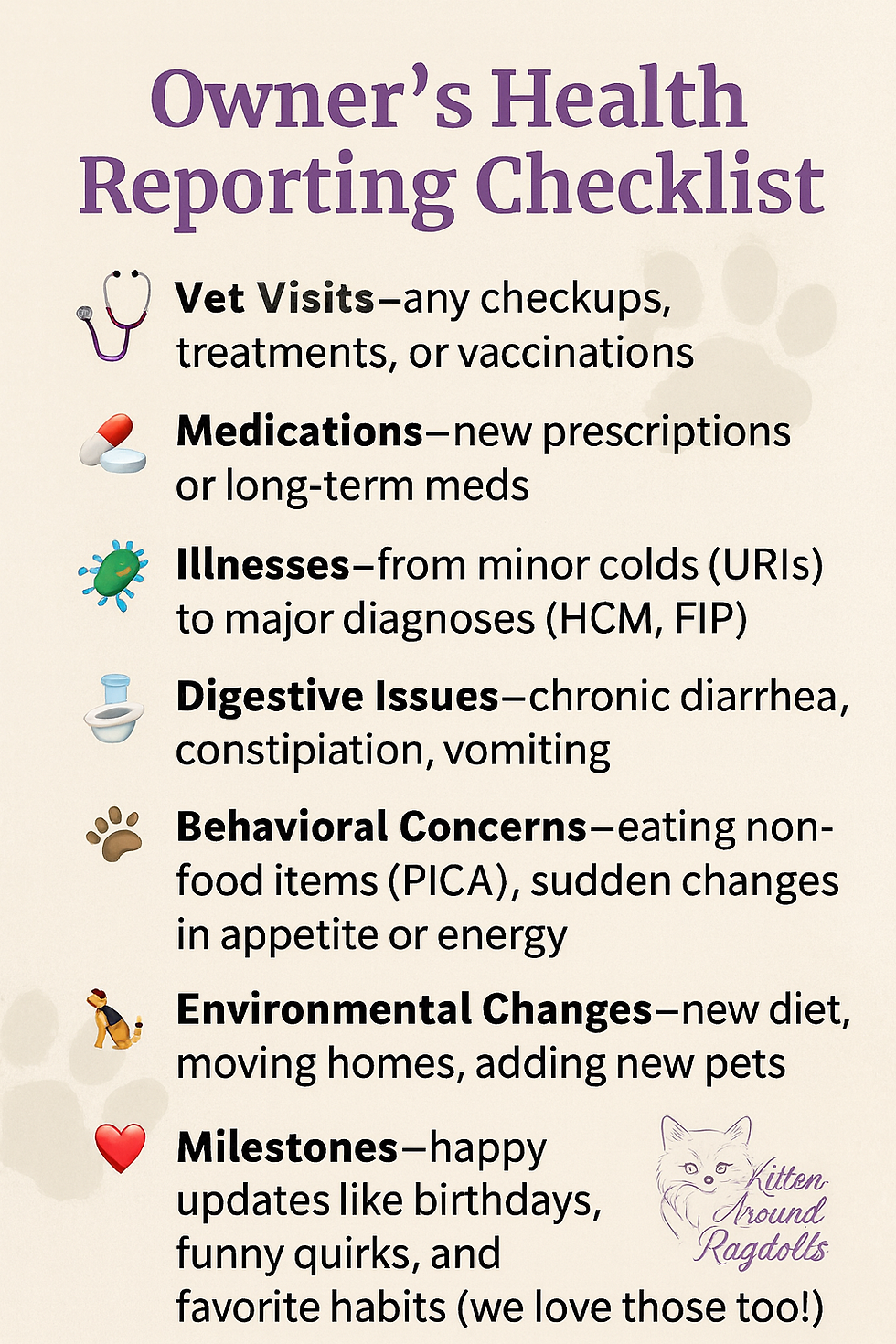What Is an Ethical Ragdoll Cat Breeder?
- Kitten Around
- Aug 4
- 3 min read
Breaking Down the Core Values That Define Responsible Ragdoll Cat Breeding
At Kitten Around Ragdolls, we believe ethical breeding is more than just caring for cats—it’s about commitment, integrity, and an unwavering dedication to preserving and improving the Ragdoll breed. But what does that really mean? In this first post of our Ethical Breeding Series, we’ll explore the heart of ethical cat breeding—starting with the cornerstone of breed preservation: breeding to the standard.
What Does "Breeding to the Standard" Mean?
When ethical breeders say they “breed to the standard,” they’re referring to an official document called the Standard of Perfection—in our case, the TICA Ragdoll Breed Standard.
This standard outlines the ideal appearance, structure, and temperament of a Ragdoll cat. It’s not just a checklist for beauty. It’s a detailed blueprint that guides breeders in preserving what makes Ragdolls so unique—from their striking blue eyes and gentle expressions to their muscular body, plush coat, and famously laid-back personality.
The standard includes specifics on:
Head shape and profile
Eye color and size
Body type and proportion
Coat length and texture
Approved colors and patterns
Gait and overall balance
A Ragdoll should not only look like a Ragdoll—it should move, act, and feel like one, too.

Core Elements of the Ragdoll Standard
Temperament: The True Ragdoll Signature
One of the most defining traits of a Ragdoll is its temperament. Ragdolls are known for their docile, calm, and people-oriented nature. They tend to go limp when held—hence the name “Ragdoll.” Ethical breeders prioritize this trait by selecting breeding cats with predictable, gentle, and loving temperaments. A Ragdoll should be confident, curious, and relaxed—not anxious, high-strung, or aggressive.
If a kitten doesn’t display the classic Ragdoll temperament, ethical breeders evaluate why—and whether that line should be continued.
Coat Texture: Silky, Not Wooly
Another key trait outlined in the TICA standard is coat texture. Ragdolls should have a medium-length, silky coat that is easy to maintain—not a long, cottony, or wooly coat that mats easily. While the coat may appear full and plush, it should feel smooth and luxurious to the touch, not dense or frizzy.
Breeding for the wrong coat texture—often because a fluffy kitten looks cute in photos—can lead to lifelong grooming problems for pet owners and discomfort for the cat. That’s why ethical breeders always prioritize coat quality over visual fluff.

Why Is the Breed Standard So Important?
Breeding to the standard is what separates ethical breeders from casual or careless ones. Here's why:
Preservation of the Breed
Every breed has a history. The Ragdoll was carefully developed over time to create a cat with a calm, affectionate temperament and distinct physical characteristics. Breeding to the standard ensures we protect that legacy.
Health and Functionality
The standard helps breeders avoid exaggerations or mutations that may look “cute” on social media but could compromise a cat’s health or mobility. A Ragdoll’s medium-to-large frame and semi-long plush coat aren’t just for show—they’re part of its physical integrity.
Fairness in the Show Ring
At cat shows, judges evaluate cats against the standard—not against one another. This keeps competition fair and objective and helps breeders improve their lines with purpose.
Informed Decision-Making
For breeders, the standard is a guiding light. It helps us make thoughtful decisions about pairings, select kittens to keep or place in pet homes, and constantly work toward bettering our program—not just repeating what’s been done.
Ethical Breeding Starts With Respect—for the Breed and the Cat
At its core, ethical breeding is about respect: for the animals, for the history of the breed, and for the people who trust us to raise healthy, well-tempered companions. We believe in transparency, education, and always putting the welfare of the cat first.
Breeding Ragdolls to the TICA standard of perfection isn’t just our practice—it’s our promise.
.png)








